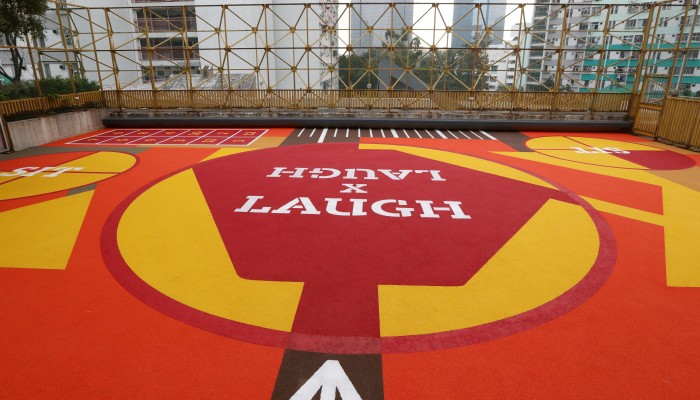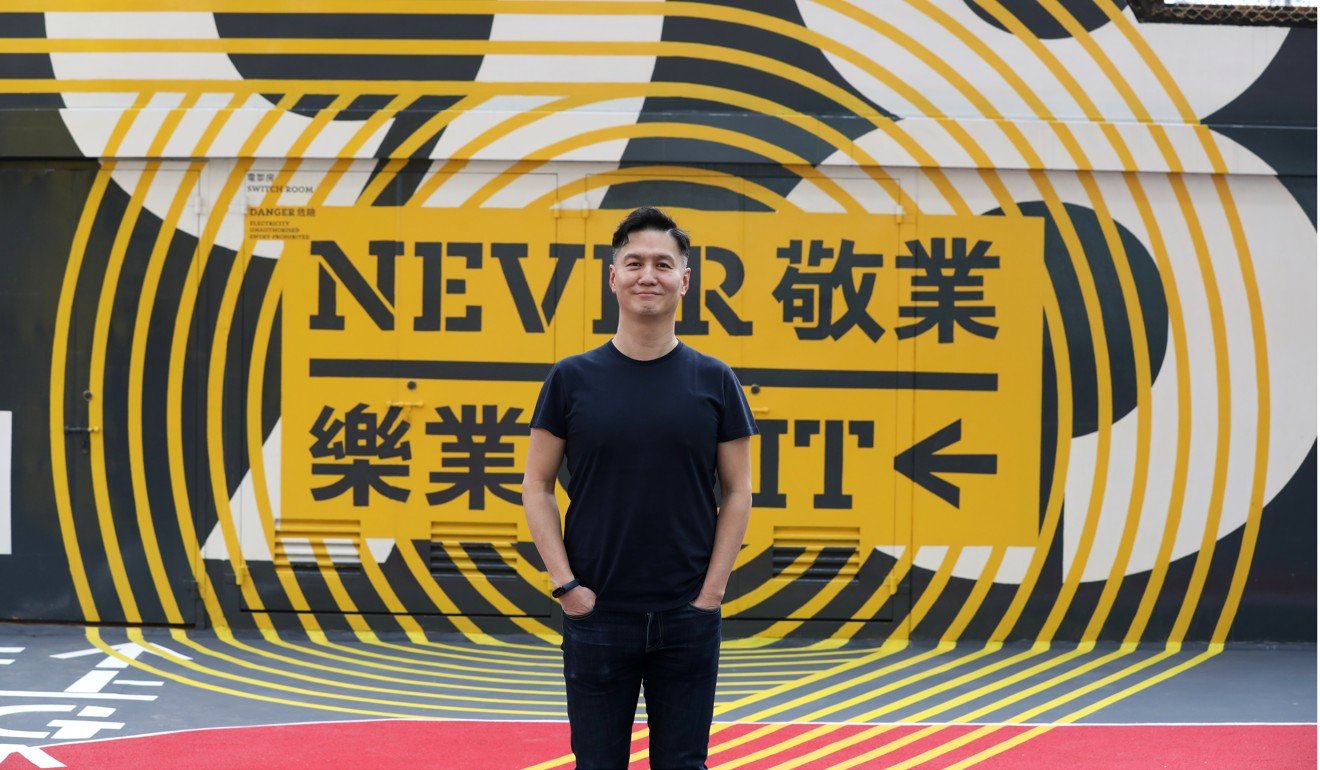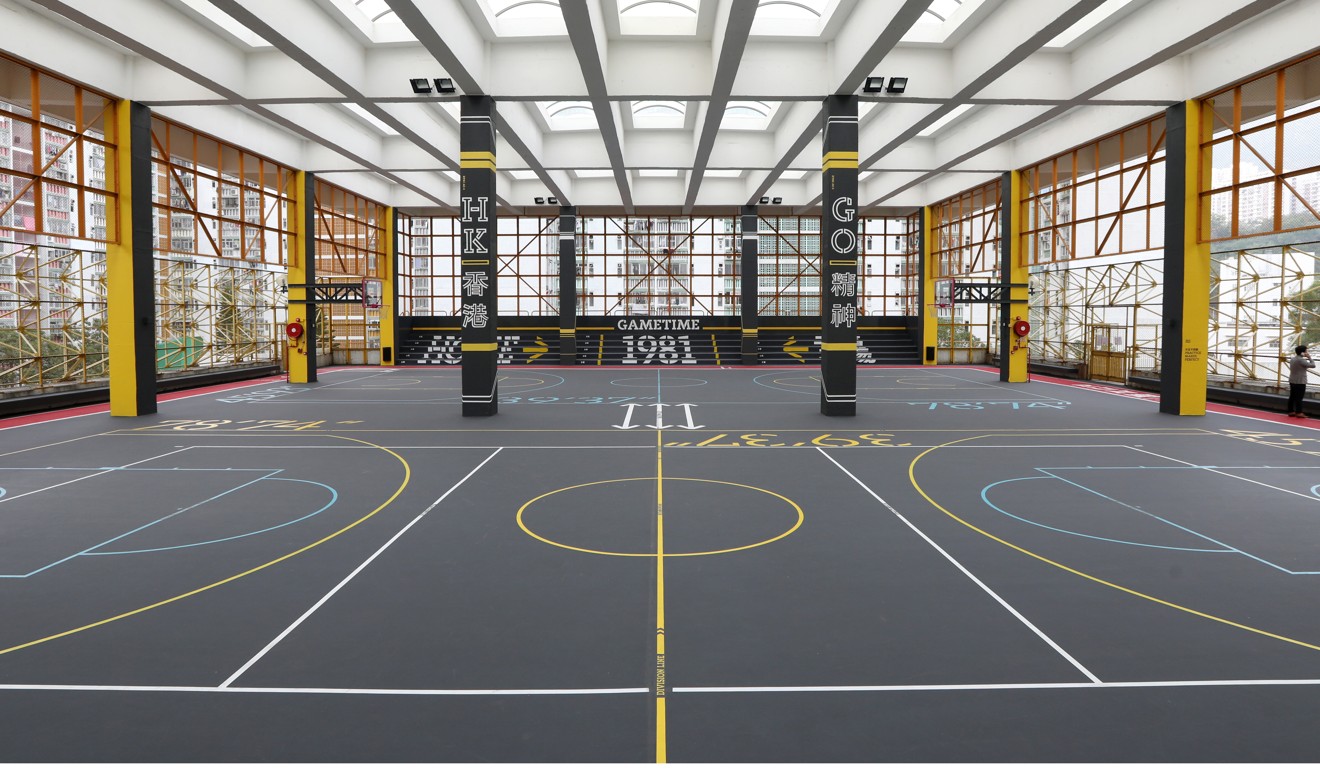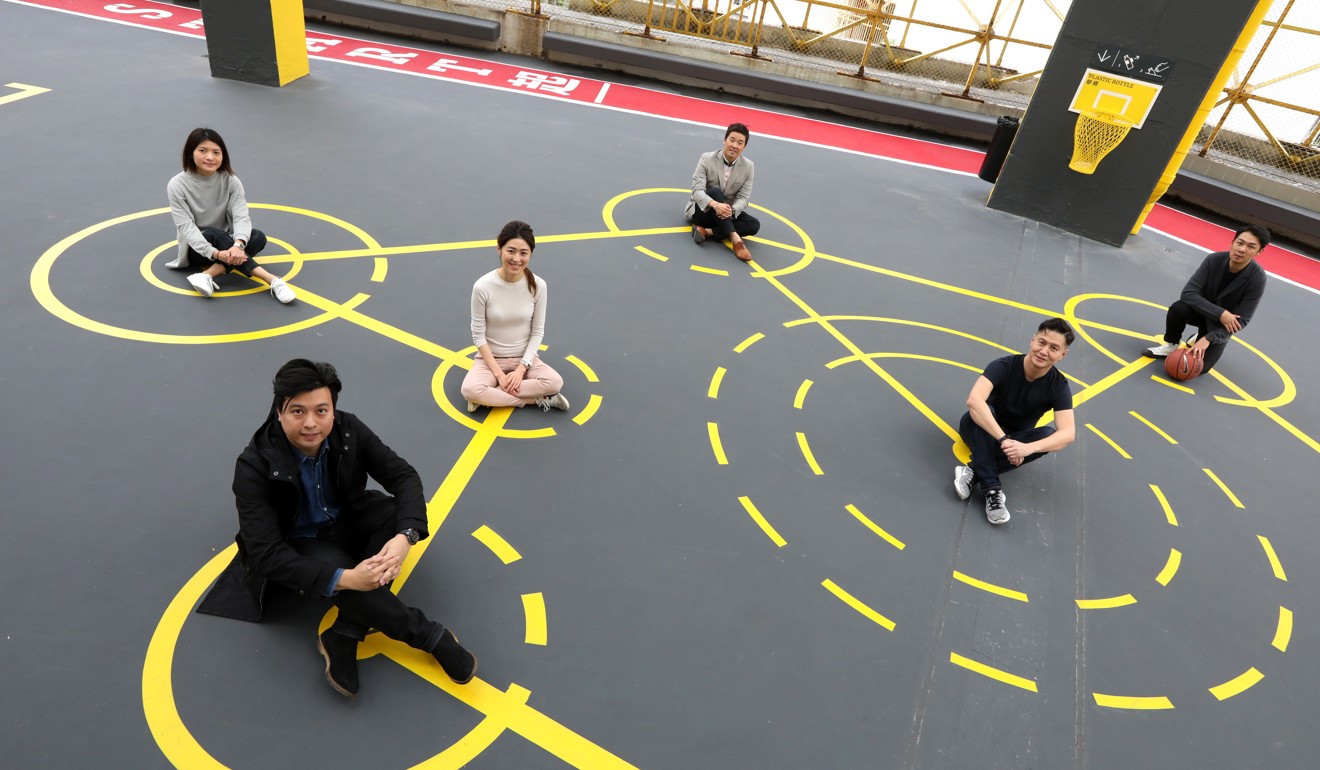
On top of a public housing estate in the working class neighbourhood of Kwun Tong, the old meets the new. A former dilapidated rooftop sports ground has been turned into a brilliant display of sharp, colourful design.
The 20,000 sq ft space at Kai Yip Estate is home to two basketball courts, a multi-purpose area used for badminton and football, and a children’s playground. A running track circles the facilities.
A year ago it was just a single lacklustre basketball court which had seen very little love since it opened in 1981. But last year it was renovated by Hong Kong private equity fund Gaw Capital Partners, after the company bought the space in March together with 16 shopping malls. In January the centre was reopened to the public, who pay nothing to use it.
“We asked ourselves: ‘What is a recreation centre?’ We came up with the idea that it should be inclusive, and people should be able to play as many types of sports as possible,” says Chris Tsui, designer and founder of SLAB, a social basketball community.

But the firm wanted the recreation ground to be about more than sports – rather, a community hub for local residents.
“The idea is for users to engage with the community and make themselves at home,” says Goodwin Gaw, the company’s chairman and managing principal.
Quality sports facilities are not the only stand-out feature. Yellow, pink and blue – reminiscent of Hong Kong’s neon lights – dominate the grounds. The visual design is a marked change from the usual dowdy green seen at other recreation spaces, Tsui says, and matches the uptempo vibe of street basketball.
“It combines original heritage with new, modern elements of Hong Kong,” he says.

One key feature of the new centre is an outdoor fitness area which was formerly a badminton court. It now hosts gym equipment such as a battle rope, as well as a children’s playground.
Alan Cheung Kwok-lun, designer of the outdoor space and co-founder and managing director of One Bite Design Studio, says he wanted users and nearby residents to have a “visual dialogue” with the ground.
The reborn centre has attracted a variety of users, from serious sportsmen and women to children from nearby schools, as well as elderly residents doing morning exercises such as tai chi. It has also emerged as an unlikely hot spot for photos taken by tourists and posted to Instagram.
The renovation was the first of its kind conducted by Gaw Capital, but the company plans to carry out more community revitalisation projects, Gaw says.

“This was the first step – an experiment for us to learn how to do it right,” he says. “Hopefully, more companies and developers will come and say: ‘We should do the same.’”
Kwun Tong district councillor Au Yeung Kwan-nok says the revitalised facilities are attracting more young people, as well as families, compared to older sports grounds in the community. Au Yeung feels the rework should be a model for similar centres across the city.
“The renovation has revitalised the local community,” Au Yeung says. “Most of the government’s recreation centres are designed in the same way. The government can now refer to this model, adding new, modern elements to other community facilities.”







